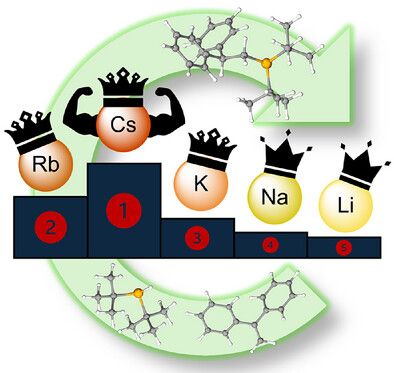
Main Group Chemistry @maintvm.bsky.social
BS-MS @swadhinmandalgroup.bsky.social

Blessed to be a part!

My group at @manchester.ac.uk is recruiting a 3.5-year PhD student to explore Sb & Bi pincer complexes for metallomimetic chemistry.
🔬 Fully funded (UK only)
📍 Manchester
🧪 Synthetic inorganic chemistry
Apply 👉 tinyurl.com/yrjkvha9

My group at @manchester.ac.uk is recruiting a 3.5-year PhD student to explore Sb & Bi pincer complexes for metallomimetic chemistry.
🔬 Fully funded (UK only)
📍 Manchester
🧪 Synthetic inorganic chemistry
Apply 👉 tinyurl.com/yrjkvha9
pubs.rsc.org/en/content/a...
pubs.rsc.org/en/content/a...
pubs.acs.org/doi/full/10....

pubs.acs.org/doi/full/10....
Heavyweight Champion: Caesium Diorganophosphides Outperform Lighter Congeners in Catalytic Hydrophosphination Angewandte Chemie International Edition - Wiley Online Library onlinelibrary.wiley.com/doi/10.1002/...

Heavyweight Champion: Caesium Diorganophosphides Outperform Lighter Congeners in Catalytic Hydrophosphination Angewandte Chemie International Edition - Wiley Online Library onlinelibrary.wiley.com/doi/10.1002/...
#chemsky #EPFL

#chemsky #EPFL
onlinelibrary.wiley.com/doi/10.1002/...
Some very elegant double-bond metathesis chemistry allows access to a phosphorus(III) telluride completing our collection of phosphorus-chalcogen double bonds.

onlinelibrary.wiley.com/doi/10.1002/...
Some very elegant double-bond metathesis chemistry allows access to a phosphorus(III) telluride completing our collection of phosphorus-chalcogen double bonds.
chemsky
www.science.org/doi/10.1126/...

chemsky
www.science.org/doi/10.1126/...





We thank ANRF India for generously supporting unconventional research in traditional areas of synthetic chemistry!
pubs.rsc.org/en/content/a... @rsc.org @chemcomm.rsc.org #maingroup



Blessed to be a part!

Blessed to be a part!


